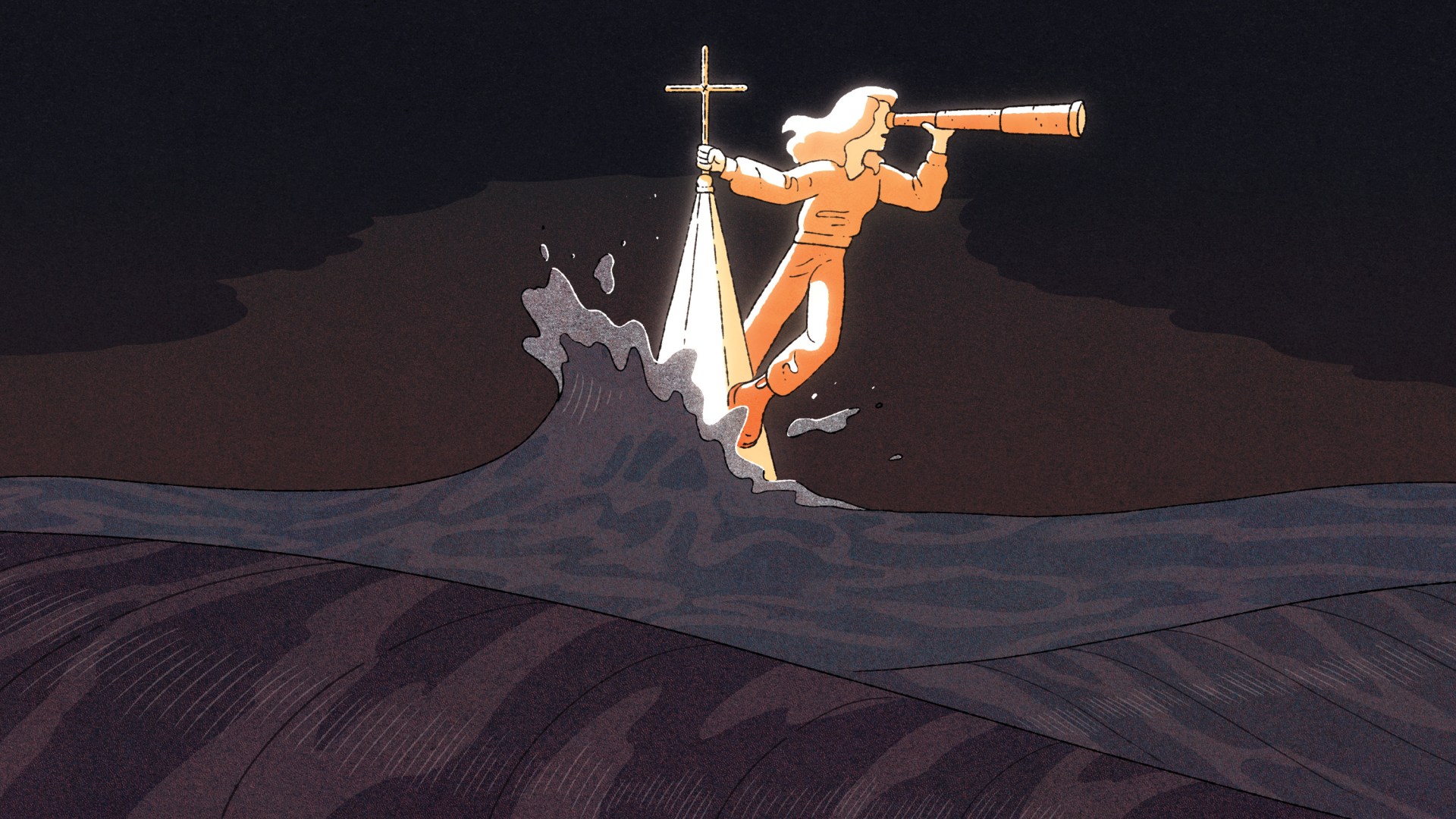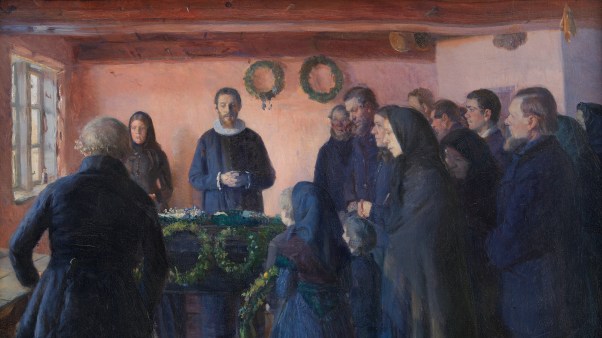Nonverts: The Making of Ex-Christian America, by Stephen Bullivant, is really two books in one. Book 1 consists of interviews with a variety of Americans who, though raised in households that were recognizably religious, now describe themselves as nonreligious. They converted out and became the sort of people who check “no religious affiliation” on surveys. And they are now part of a subgroup that sociologists call “nones.” Bullivant uses the term nonverts to describe the subset of nones who were once affiliated but now are not.
Bullivant argues that nonverts deserve special attention. Many people have no religious affiliation. But the nonverts, the formerly religious, view their nonaffiliation differently from those Bullivant calls “cradle nones.” The story of how nones recently rose to be 30 percent of American adults hinges on understanding the proliferation of nonverts. The past three or four decades of religion in America are defined by adults leaving religion. If you fail to understand what might be called “nonversion,” you cannot understand the rise of the nones.
Something has shifted
Bullivant’s theory of why and how this happened comprises book 2.
The chapters move back and forth between book 1, the interviews, and book 2, the theory. Their titles are laden with language gags that would leave even the most devoted punsters stifling groans and eye rolls.
Take, for instance, the chapter that introduces the theoretical narrative, which Bullivant titles “None the Up and Up.” (If you don’t care for this sort of wordplay, you may want to skip past this paragraph.) Next comes interviews with Mormons (“When the Saints Go Marching Out”). Then a theoretical chapter defining the nones (“None Specific”). Then interviews with members of the old mainline (“Flatline Protestants”). Then a chapter of historical context (“Nothings Come from Nothing?”). More interviews (“Exvangelicals”). More theory (“The Ex Effect”—and here the author really lays out the book’s core argument). More interviews (“Recovering Catholics”). And then the theoretical finale (“Nonvert Nation”).
If listing all nine chapter titles seems a little much, I would argue that they give a better flavor of Bullivant’s writing style than any description I could offer.
If you are not especially interested in theory as such, please do not let my use of that term put you off this book, which is not especially theoretical in any labored academic sense. However, if you read the chapters I’ve called “theory” and the footnotes, which are copious and very interesting, you’ll find a clear story being told. That story, in a nutshell, is this: “The rise of the nones, fueled primarily by an extraordinary two or three decades of … nonversion, marks a decisive moment in American religious and cultural history.”
Bullivant hopes you will read the theory and the footnotes, but he tries to make this book accessible to nonsociologists by saying things like this about the more technical parts: “They are there for the benefit of readers who like or need these kinds of academic accoutrements. Others may simply allow their eyes to skim over the little numbers floating in the text, safe in the knowledge that they’re mainly missing out on bibliographic details and dad jokes.”
Even if you do skip the stats and the notes, you will find the theory helpful. The details about nones in the “None Specific” chapter are clear. If you read studies from political scientists like Ryan Burge or sociologists of religion like Mark Chaves, you may know some of this already, but Bullivant does a good job of summarizing the relevant findings.
The history provided in “Nothings Come from Nothing?” is even more helpful. Something has clearly shifted in American culture—and though some of this shift is recent, it is grounded in changes that came much earlier. Several million people did not randomly, suddenly have several million individual changes of heart in the space of 40-odd years. Kudos to Bullivant for his cultural history, summarized in six clear statements at the end of the chapter.
“The Ex Effect” lays his argument out most clearly. America really has become less religious and, more specifically, less Christian, over the past several decades. In the middle of the 20th century, the Cold War reinforced the ideal of godly America as a counterpoint to godless communism. As the Cold War faded, however, the option of not having a religious affiliation became normalized. The tide turned slowly, but turn it did. Religion’s ability to maintain traditional authority over against the many forms of burgeoning personal choice available in ideas, sexuality, gender identity, and so on, weakened.
This led, as we now know, to a flurry of activist antireligion (think Richard Dawkins and other New Atheist celebrities). Interestingly, though, Bullivant believes this vibrant antireligion will tail off soon enough. Right now, nonreligion is fueled by several decades’ worth of ex-religionists who have strong reasons, often emotional and sometimes very painful, for leaving. But soon enough, nonreligion will be one more mainstream viewpoint, and there will be more cradle nones than ex-religionists. At that point, as Bullivant sees it, antireligious activism will slow down because, in essence, most nones will no longer care very much. They won’t be therapizing the loss of their old religion; they’ll just be none the way other people are Protestant or Catholic.
Roughly here is where a reviewer says, “But I do have some concerns,” so here are mine. First, the introduction to this book hints that it will be a qualitative study based on interviews with ex-Christians of various kinds. But in the end, it is an argument that nonverts are the real story of the nones—an argument Bullivant was gestating long before these interviews were conducted. That argument is the real book, with the interviews there to add color and texture. If you pay attention to much religious journalism, you can correctly guess what soured ex-Mormons, ex-mainliners, exvangelicals, and ex-Catholics on the religion of their youth. Their stories in the interview chapters are believable, but this is not a qualitative study in the sense that the argument rises up from their narrated experiences. This is the story of what happened, and why, with personal narratives thrown in for ballast.
The theory, especially the theory supported by the statistics and footnotes, would seem to be for sociologists and social psychologists. The author believes they have mostly missed this key distinction, the part about “ex” being so different than simply being “none.” Says Bullivant, “In truth, and as is often the case, sociologists are late in catching up to what common sense screams at us” about why the exes are different. Basically, as he explains, there are lots of people we are not married to, but our ex-spouse is qualitatively different from all the others.
The underlying story
It is tactless for a reviewer to talk about the book he or she would have written instead, but I will suggest two possible insights here, because I think they are relevant to digesting this book.
First, perhaps the underlying story is really the flourishing of individualism. Many Americans now define themselves as self-actualizing in myriad ways. Yes, many abandoned the discipline and authority of religion—this is self-evidently true—but many also abandoned traditional gender roles and identities, traditional strategies of household formation, and traditional vocational or educational models. Their movement away from religion might be exactly the same as their movement away from many other kinds of belonging.
This hypothesis, if true, does not make Bullivant wrong, but it puts his story in a much larger context. In a world where individual desires trump every kind of organizational authority, leaving one’s religion is just one more case of a general trend.
Second, it is easy, and frequently unfair, to plead “diversity” against any theory, because no theory can cover every different situation. But this story of nonverts sure sounds like a “white people” story. In Britain, where Bullivant lives and works, immigrant religion has led a comeback in religious participation, even though it has done little for the established Anglican communion. Could it be that a segment of white Mormons, white mainliners, white Catholics, and white evangelicals are headed one way in America—out of religion—but the rest of America is, taken together, headed the other way?
The secularization of white, Western countries is a global anomaly, not the rule. The world will get steadily more religious in the next century, primarily due to growth in birthrates in Muslim countries, growth of Christianity in the Global South, and—if Purdue University religion scholar Fenggang Yang is correct—growth of Christianity in China.
America appears to be headed toward a non-white majority very soon, so maybe the present story of religious decline actually has a very different ending. The majority of children in the U.S. today are not of European descent. We are witnessing white, European America experiencing its own version of what happened to white Europe, but perhaps a new religious tide is coming in just as these older remnants are drifting out.
Those two points notwithstanding, the change in religion noted by Bullivant is very real, and his argument about nonversion leading this change is convincing. If you are interested in the story of decline in certain traditional forms of American religion—and if you work in the field of American religion, you should be—this book is worth a look.
Arthur E. Farnsley II is research professor of religious studies at Indiana University–Purdue University Indianapolis. He is senior research fellow for The Center for the Study of Religion & American Culture.










